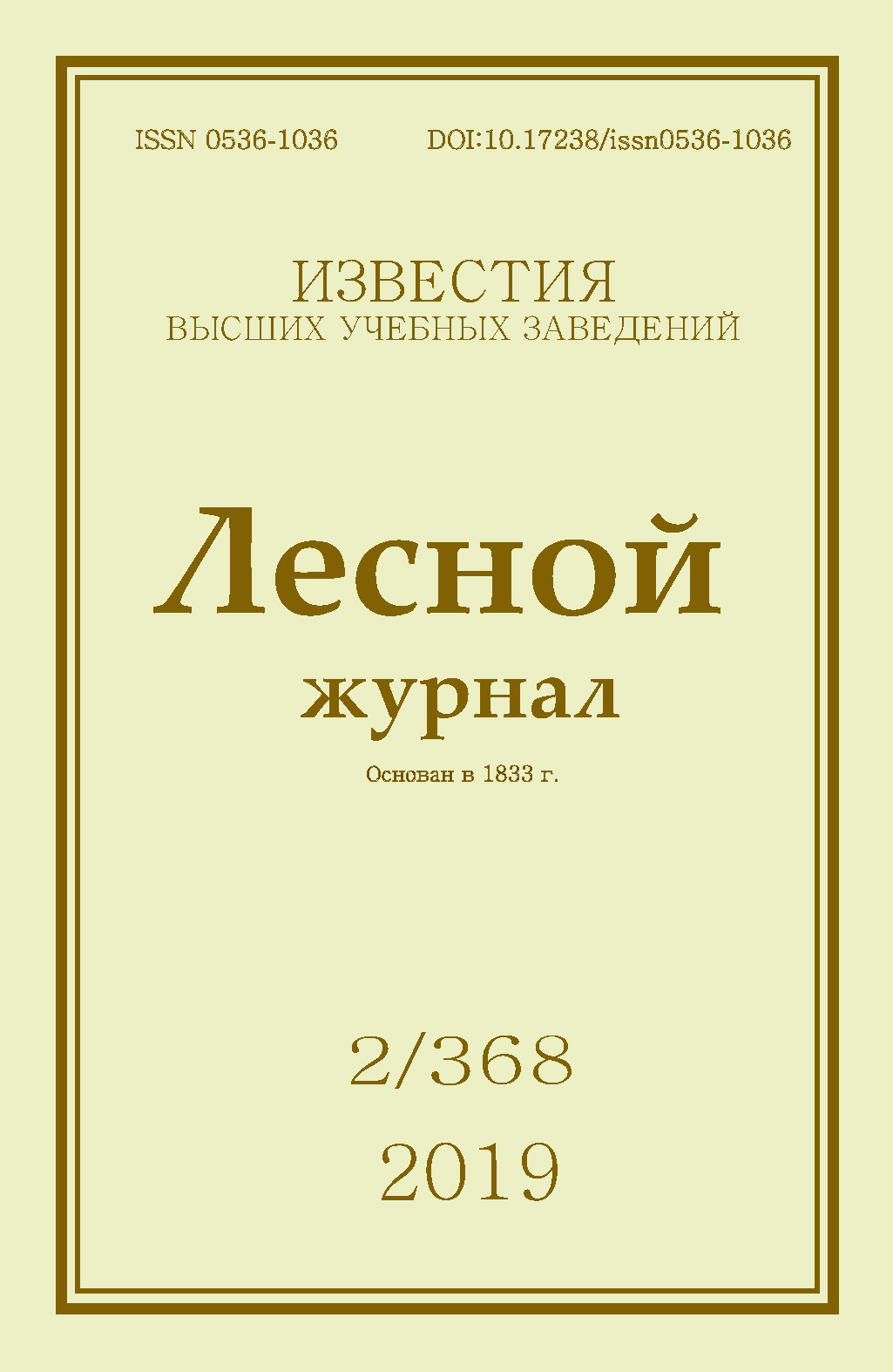Modification of Phenol Formaldehyde Resins by Wastes of Aluminum
DOI:
https://doi.org/10.17238/issn0536-1036.2019.2.130Keywords:
veneer,, plywood, phenol formaldehyde resin, modification, production wastes, electrostatic precipitator dust, cold stack sludge, gluing modes, strength of final products, toxicity of final productsAbstract
In aluminum production a large amount of anthropogenic wastes is generated. The technological process of self-baking anodes implies formation of the following by-products: gas treatment sludge, electrostatic precipitator dust, skim flotation tailings, sludge field wastes (sludge), fireclay and carbon lining of reduction cells. Major cities of Siberia (Krasnoyarsk, Bratsk, Irkutsk) near the city limits have landfill sites of large-tonnage, unutilized wastes that pose a threat to the nature and city residents. In this regard, the possibility of using aluminum and pulp and paper production wastes as a modifier of finished phenol-formaldehyde resins was evaluated. Electrostatic precipitator dust, which is chemically active fine black powder, can be used for reducing the toxicity of synthetic resins and glues based on them, cold stack sludge (polydisperse, polyfunctional copolymer, which consists of lignin structural units) for modification of synthetic glues. Funnel viscosity of glue 1 hour after the modifier introduction, glue tack range, curing time and formaldehyde emission were determined as a part of the study. In order to substantiate the technology of plywood gluing by phenol-formaldehyde glue based on SFZh-3013 (СФЖ-3013) resin modified with wastes of aluminum and pulp and paper production a multifactorial experiment with determination of the modifier content in resin, duration and compacting pressure was carried out. It has been found that introduction of aluminum and pulp and paper production wastes into phenol-formaldehyde resins will allow reducing the costs of final products, recycling wastes of pulp and paper production, increasing the final product strength and decreasing the free formaldehyde content in it.
For citation: Rusakov D.S., Varankina G.S., Chubinskiy A.N. Modification of Phenol For-maldehyde Resins by Wastes of Aluminum and Cellulosic Pulp Production. Lesnoy Zhurnal [Forestry Journal], 2019, no. 2, pp. 130–140. DOI: 10.17238/issn0536-1036.2019.2.130
Downloads
References
Баранов А.Н., Гавриленко Л.В., Моренко А.В., Блашков А.А., Пентюхин С.И. Переработка твердых фторуглеродсодержащих отходов алюминиевого производства // Системы. Методы. Технологии. 2011. № 2(10). С. 113–115.
Бахман А., Мюллер К. Фенопласты. М.: Химия, 1978. 288 с.
Варанкина Г.С., Русаков Д.С. Модификация фенолоформальдегидной смолы побочными продуктами сульфатно-целлюлозного производства // Изв. СПбЛТА. 2013. № 204. С. 130–137.
ГОСТ 3916.1–96. Фанера общего назначения с наружными слоями из шпона лиственных пород. Технические условия. М.: Стандартинформ, 2008. 12 с.
ГОСТ 9624–2009. Древесина слоистая клееная. Метод определения предела прочности при скалывании. М.: Стандартинформ, 2010. 10 с.
ГОСТ 27678–2014. Плиты древесные и фанера. Перфораторный метод определения содержания формальдегида. М.: Стандартинформ, 2015. 8 с.
Еромасов Р.Г., Никифорова Э.М., Спектор Ю.Е. Утилизация отходов алюминиевого производства в керамической промышленности // Журн. Сиб. федер. ун-та. Техника и технологии. 2012. Т. 5, вып. 4. С. 442–453.
Крыжановский В.К., Кербер М.Л., Бурлов В.В., Паниматченко А.Д. Производство изделий из полимерных материалов: учеб. пособие. СПб.: Профессия, 2004. 464 с.
Русаков Д.С., Варанкина Г.С., Чубинский А.Н. Модификация феноло- и карбамидоформальдегидных смол побочными продуктами производства целлюлозы // Клеи. Герметики. Технологии. 2017. № 8. С. 16–20.
Русаков Д.С., Чубинский А.Н., Русакова Л.Н., Варанкина Г.С. Исследование свойств модифицированных фенолоформальдегидных клеев // Изв. СПбЛТА. 2018. Вып. 222. С. 155–174. DOI: 10.21266/2079-4304.2018.222.155-174
Шиманский А.Ф., Власов О.А., Никифорова Э.М., Еромасов Р.Г., Симонова Н.С., Васильева М.Н. Рециклинг шлаков высокотемпературного сжигания твердых бытовых отходов в технологии керамического кирпича // Фундаментальные исследования. 2016. № 3 (ч. 1). С. 76–81.
Chubov A., Tsaryov G., Matyushenkova E. Excusive Wood Protection Technique // Russian Forestry Review. 2008. No. 3. Р. 79.
Felby C., Hassingboe J., Lund M. Pilot-Scale Production of Fiberboards Made by Laccase Oxidized Wood Fibers: Board Properties and Evidence for Cross-Linking of Lignin // Enzyme and Microbial Technology. 2002. Vol. 31, iss. 6. Pp. 736–741. DOI: 10.1016/S0141-0229(02)00111-4
Friedl L. Concrete Sleeper Technology // European Railway Review. 2004. No. 2. Pp.73–78.
Hofrichter M. Review: Lignin Conversion by Manganese Peroxidase (MnP) // Enzyme and Microbial Technology. 2002. Vol. 30, iss. 4. Pp. 454–466. DOI: 10.1016/S0141-0229(01)00528-2
Leykauf G., Stahl W. Concrete Railway Sleepers for the Optimisation of Ballasted Track // European Railway Review. 2004. No. 2. Pp. 61–71.
Matyushenkova E. Wood Protection Techniques in Russia // Russian Forestry Review. 2008. No. 3. Pp. 76–78.
Sintonen K. Data Processing in a Plywood Factory // Raute News. Finlyandiya. 2002. Vol. 3, no. 2. P. 168.
Varankina G.S., Chubinsky A.N. Modification of Urea-Formaldehyde Resins Shungite Sorbents // Development and Modernization of Production: International Conference on Production Engineering, Bihac, 2013. Bihac: Bihac University, 2013. Pp. 1–4.







